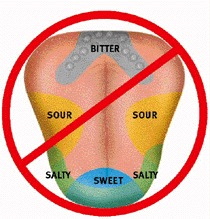“This wine tastes and feels amazing!”
If not the most important, then two of the most important senses in wine tasting are the taste and the touch.
Let's talk about taste first.
Our tongue is responsible for the sense of taste, which is mediated by taste receptor cells which are bundled in clusters called taste buds. Taste receptor cells sample oral concentrations of a large number of small molecules and report a sensation of taste to centers in the cerebrum. Within a taste bud, some taste receptor cells sense sweet, while others have receptors for bitter, sour, salty and umami tastes.

It is very interesting to mention here that studies have shown that the map of the tongue senses, where each part of the tongue feels a different taste is a misconception. The taste buds are about 10.000 distributed mainly all over the tongue and to a much lesser extent in the inside of the mouth, specially at the back of the throat.

What taste is was already more or less obvious, but what about the touch? Does somebody touch the wine with their fingers in order to sense it? Of course not!
When we say “touch” we mean the mouthfeel that a wine gives when we taste it, but also after we swallow it. Talking about the sense of the touch, we refer to the texture of the wine, its alcohol level, its fattiness, its astringency, its temperature and many others which are all detectable by tactile sensations.
The science that is hidden behind a simple wine tasting can be both fascinating and long, so maybe it's the time to taste a wine!
Tasting wine is quite simple. Take a reasonable sip of wine into your mouth. It’s important that you place enough wine in your mouth to obtain the full tasting profile and textural sensations. Next, slightly open your lips and inhale some air. Swirl the wine around your mouth for better appreciation. Notice all the sensations taking place in your mouth and on your palate. Did the wine feel pleasant when it landed on your palate? Was the wine smooth, silky, velvet like and rich in texture? Or was the wine rough and dry? Was the wine light, medium or full-bodied?
An easy way to judge this is by comparing the wine with water for light, milk for medium, and if it is more concentrated that milk then you have a full-bodied wine. Was the wine fresh? The freshness is derived from the acidity. The absence of it makes a wine taste flat.

Another way to see if your wine has a high acidity is by noticing how much saliva is produced on the sides of your mouth. The more saliva produced, the higher the acidity! You can also find if the wine is sweet, bitter, spicy, or if it has tastes of ripe fruits. What about the astringency? Were the tannins elegant and smooth or harsh? Tannins come from the skins, seeds and stems, and create a dryness in the mouth in the finish. When we talk about a balanced wine we mean a wine where its fruit, acidity and tannic content are in harmony.
Another characteristic that is important to mention is the persistence of a wine. Was the finish long or short? Usually a longer finish shows a better wine. About 8 -10 seconds is considered to be an average good duration.
Now that you know a bit more about how to taste and feel a wine, and about what you should be looking for while you are doing it, try it together with your friends!
In the case you are not a wine critic, try to figure out what you like and don't like about a wine, and allow your wine knowledge and vocabulary to evolve.

